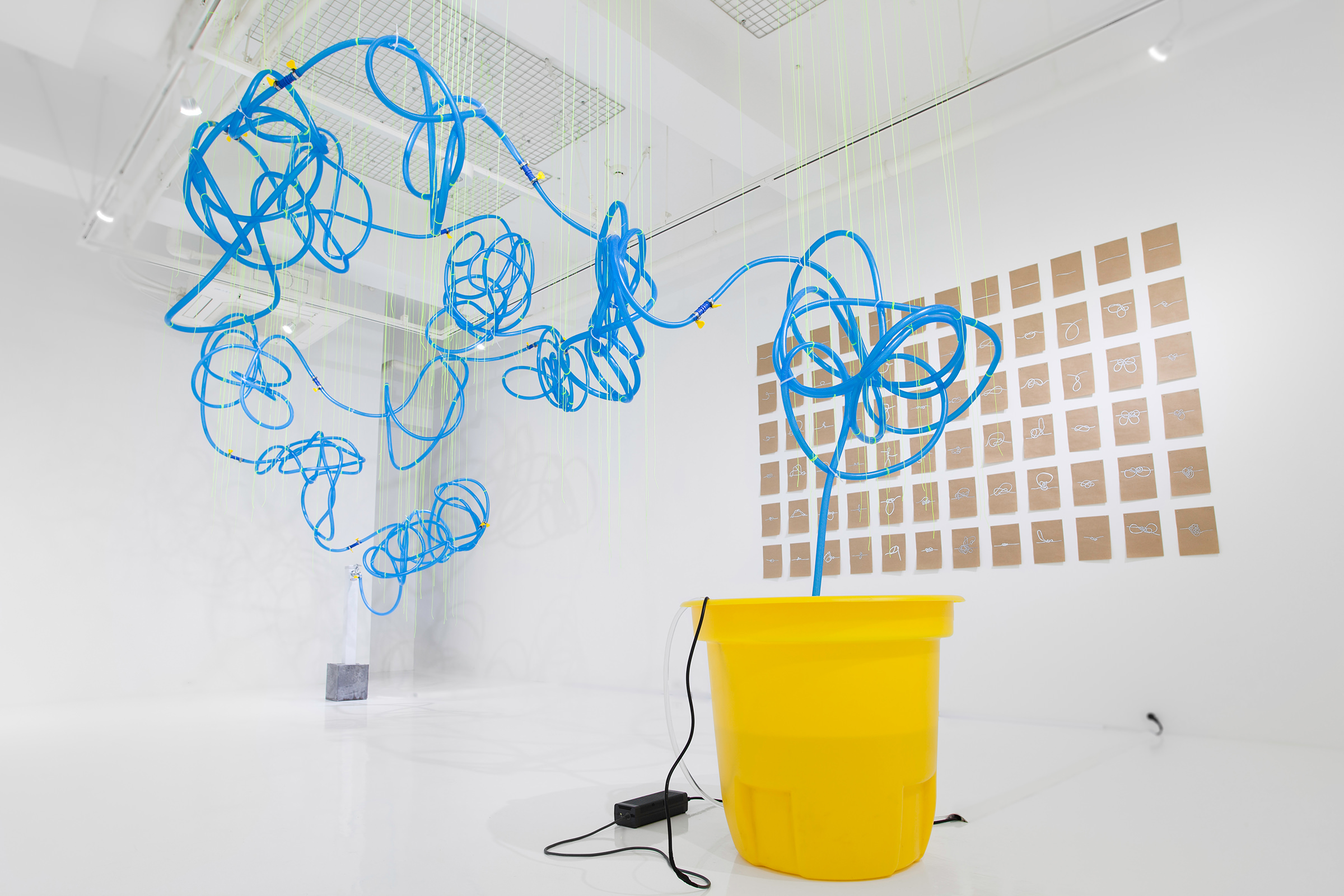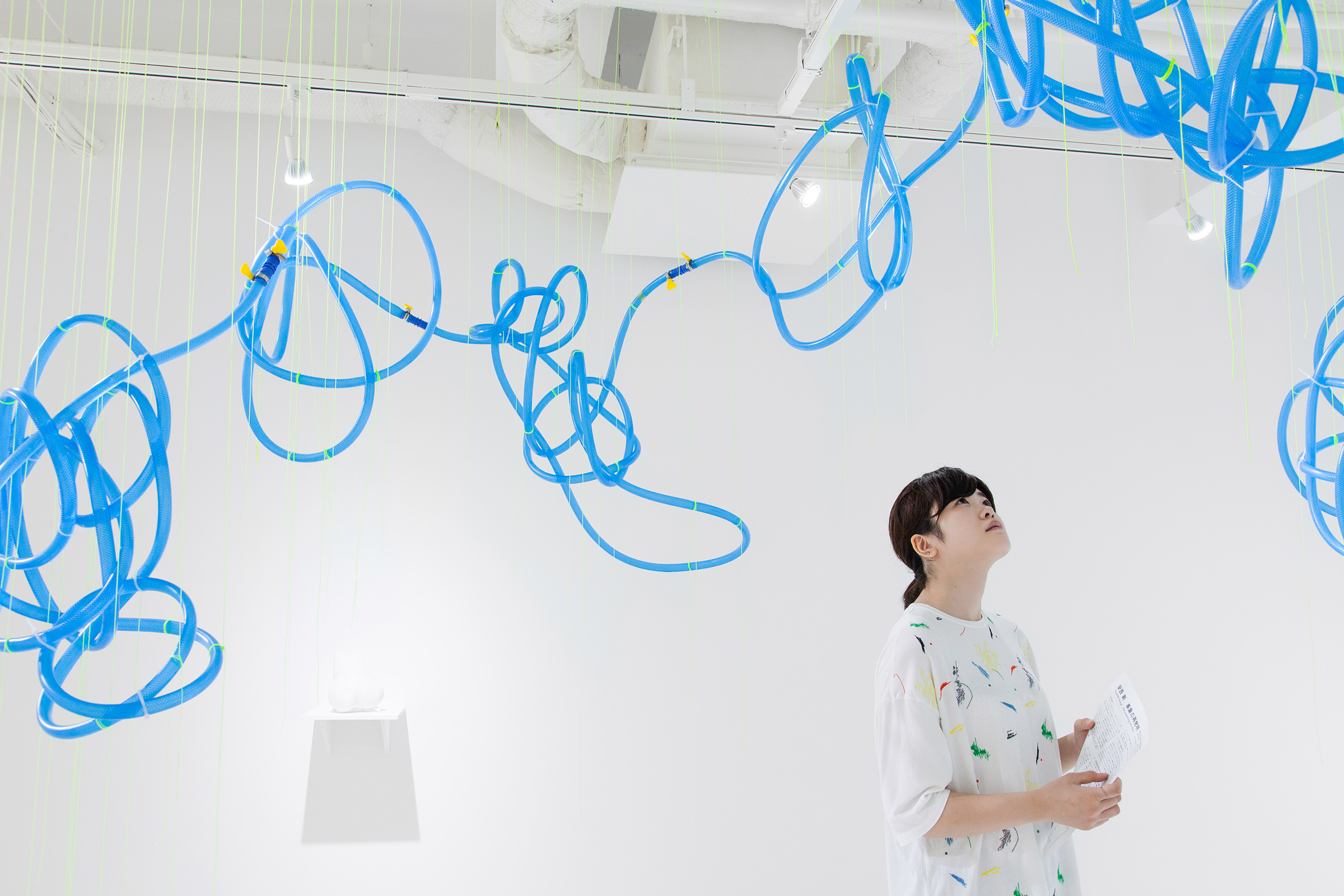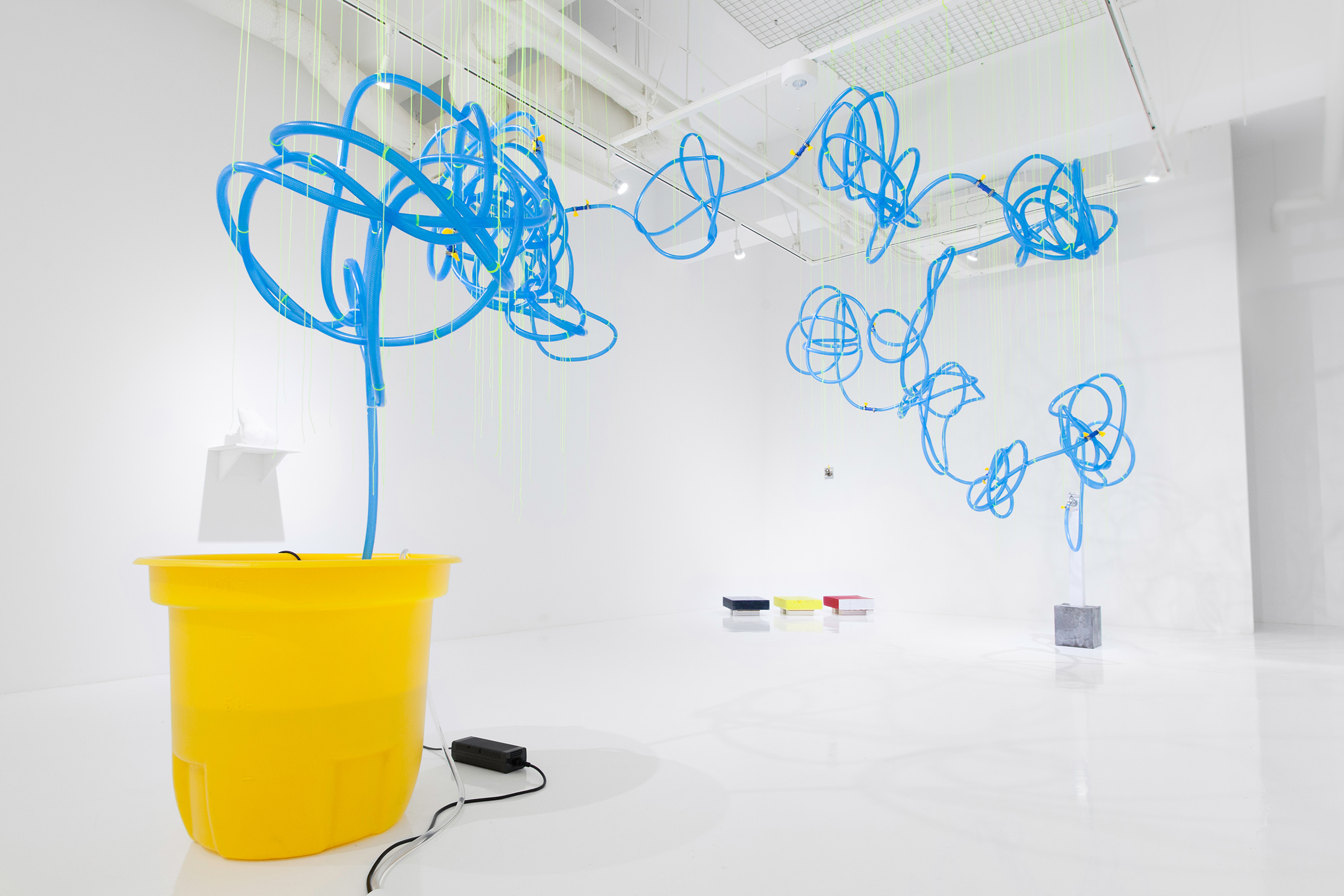th-read
2015, 18
Ink on kraft paper, photograph (Lambda c-type print), everyday items, tube, extension cables, a light bulb
Drawings on the wall are the instructions on how to tie knots which were made by accident. Firstly, Anzai asked 12 collaborators to carry a thin thread in their pockets for a day. Then, he asked them to draw the process of unraveling the tangled thread step by step. Although the series of drawings were made to show the steps of untangling the knots, if seen in the reverse order, the drawings will become instructions on how to reproduce those intricate knots. Lastly, following the instructions, he attempted to reconstruct the coincidental forms using different materials. In the workshop held in 2015, the collaborators reproduced knots using garden hoses, but for a recreation in 2018, he used extension cables, tubes and various everyday items.
The accidental outcome becomes an inevitable outcome by being documented and reconstructed according to the documentation. Plurality of copies destroys the uniqueness of the original tangled thread and makes it nothing more than one possible interpretation. What identifies the form reproduced according to the drawings is no longer the physical object itself (i.e. the knot) but the method of how it is created. In this respect, the object becomes transformed from a phenomenon into a software.
壁に貼られたドローイングは、偶然絡まってしまった糸を意図的に再構成するための指示書です。12人の協力者に1日以上糸を持ち歩いてもらい、絡まってしまった糸を解いていく過程を描いてもらいました。このドローイングは解く過程を描いたものですが、逆から読むことでどのようにその「絡まり」を結び直すかということを示しています。2015年にはホースを使って再構成しましたが、2018年の展示では、延長コード、チューブ、様々な日用品で再構成しました。
偶然できたカタチを記録し、意図的に再構成しようとすることで、偶然を必然に反転させています。いくつもの複製は、元のカタチの単一性は失わせ、解釈の可能性の一つとなります。同じ指示書を元に再現された紐状の物体同士を規定しているのは、最早モノそれ自体ではなく、どのように結ばれたかというメソッドなのです。この時、オブジェクトは出来事からソフトウェアへと脱物質化されています。














